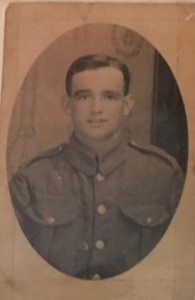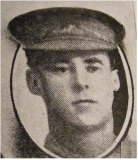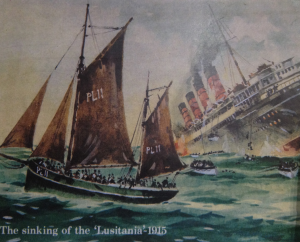 Frederick and Frank Teare, stepbrothers born in Peel, were in two different armies when the battle of Arras started on 9 April 1917. They died within days of each other and despite being in the same battle and within miles of each other almost certainly had no idea they were so close. Frederick and Frank Teare are remembered on the Peel War memorial.
Frederick and Frank Teare, stepbrothers born in Peel, were in two different armies when the battle of Arras started on 9 April 1917. They died within days of each other and despite being in the same battle and within miles of each other almost certainly had no idea they were so close. Frederick and Frank Teare are remembered on the Peel War memorial.
In the spring of 1917, British Empire and French forces began a combined offensive against the German Army on the Western Front in France. British Empire troops attacked around Arras on 9 April. Far to the south, the French launched their attack on 16 April, along the Chemin des Dames ridge. Arras had been close to the front line throughout the war, and was dominated by the high ground of Vimy Ridge. The German defences were formidable, with several lines of trenches, concrete blockhouses and deep dugouts.
The Canadian Corps, made up of the 4 Canadian Divisions, attacked and captured the high ground of Vimy Ridge that dominates the Douai plain and provides unobstructed views in all directions.
Frank Teare, a corporal in the Canadian Infantry Alberta Reg: 50th Bn. was killed on the 10 April 1917, the second day of the battle for Vimy Ridge. Despite severe cold and unseasonal snow the Canadians captured the majority of Vimy Ridge on the first day. They dug in and consolidated their positions overnight and on the 10th were attacking a small summit known as Hill 145. By the 12 April the Canadians controlled the whole ridge but at a cost – 10,602 Canadians were wounded during the attack, and 3,598 killed.
More about the story of Frank Teare and how he came to be in the Canadian Army here.
To the south an advance of over three and a half miles achieved by the 9th (Scottish) Division and the ‘leapfrogging’ 4th Division resulted in the capture of the village of Fampoux. This advance was the longest made in a single day by any belligerent from static trenches.
Frederick Teare, a sergeant in the 2nd Seaforth Highlanders, was wounded on the 11 April in the disastrous attack from Fampoux. Only 57 of the 363 men and 12 officers who started the attack returned unscathed. He died from his wounds in Hospital in Etaples 12 days later.
More about the story of Frederick Teare and how a master mariner came to die on the Western Front here.



